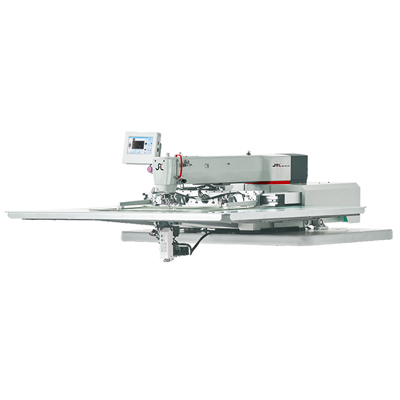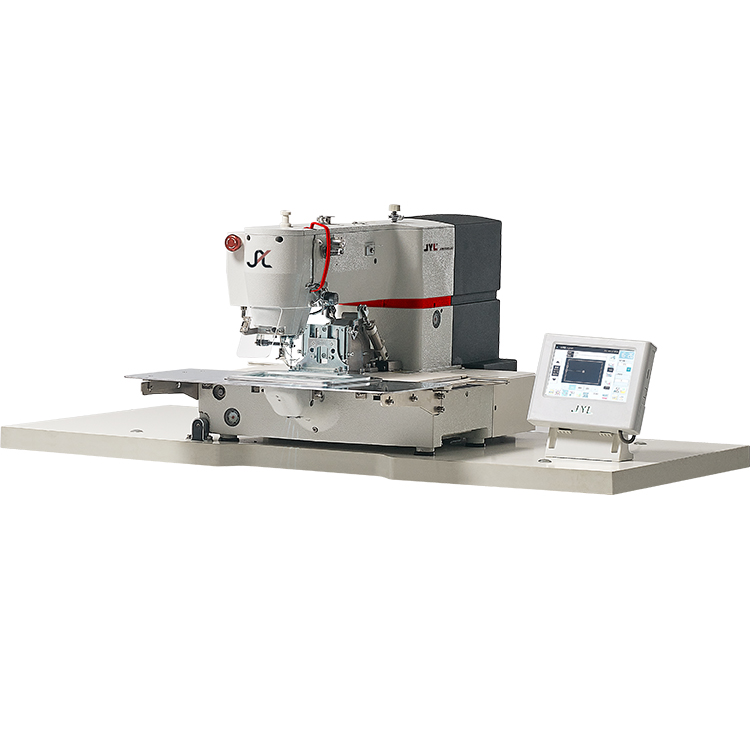Assuming you would like a content section for the subheading "Application Features Benefits" for the blog article titled "Description of Computerized Pattern Sewing Machine": An embroidery machine is a great way to personalize projects or to add an extra special touch to otherwise ordinary items. Embroidery machines come in a variety of sizes and with many different features, so it is important to choose one that best suits your needs. For example, some machines are better suited for smaller projects while others have features that make them ideal for larger projects.One of the most important things to consider when purchasing an embroidery machine is the types of fabrics you plan to use. Not all machines are able to handle all fabric types, so it is important to know in advance what type of fabrics you will be working with. Another thing to keep in mind is the stitch quality. Some machines produce better stitches than others, so if you are looking for a machine that produces high-quality stitches, be sure to do your research before making a purchase.

Product Specification
| Item No. | JYL-B2210G |
| Sewing Area | 220x100mm |
| Maximum Sewing Speed | 2800r.p.m |
| Sewing Trace | Single Needle Flat Seam |
| Feeding | Intermittent feeding(Pulse motor drive) |
| Stitches length | 0.05mm-12.7mm |
| Maximum stitches | 20000stitches per pattern |
| Stored Stitches | Built-in memory can store 500000 stitches |
| Foot driving method | S-pulse motor drive |
| Pressing foot height | 25-30mm |
| Heihgt of big presser foot | Maximum 30mm |
| Air pressure | 0.5MPa 1.8L/min |
| Supply voltage | AC 220V |
| Media | With sound alarm device |
| Intermittent pressure lift | 22mm |
| Stored programs | 1-999patterns |
| Machine Size | 1200×820×1230MM |
| Weight | 150KG |

Key Features of Computer Sewing Machines:
1.Automated Stitching Functions
Computer Sewing Machines offer automated stitching functions, allowing users to select and program stitches with the touch of a button. This eliminates the need for manual adjustments and ensures precise and consistent results every time.
2.Wide Range of Stitch Patterns
Many computer sewing machines come with a library of pre-programmed stitch patterns. These patterns include utility stitches, decorative stitches, quilting stitches, and embroidery designs, which can be selected from a user-friendly display panel. Users can even add custom patterns or import designs for embroidery.
3.Programmable Embroidery
One of the standout features of computer sewing machines is the ability to perform embroidery tasks. These machines allow users to upload digital embroidery files and stitch out complex designs automatically, making them ideal for personalizing garments, accessories, or home décor items.
4.LCD Touchscreen Display
Most modern computer sewing machines feature an intuitive LCD touchscreen display that makes navigation easy. The display allows users to choose from various settings, monitor stitching progress, adjust stitch length and width, and even view detailed instructions.
5.Precision and Accuracy
With their computer-controlled mechanisms, these sewing machines provide unmatched precision in stitching. This is especially beneficial for detailed and intricate work, such as embroidery or fine tailoring, where accuracy is crucial.
6.Speed Control
Computerized sewing machines allow for adjustable speed control, giving users the flexibility to sew at a pace that suits the project at hand. This feature is especially helpful when working with delicate fabrics or when performing embroidery tasks that require slow and steady stitching.
Automatic Threading and Tension Adjustment
Many advanced models include automatic threading and automatic thread tension adjustment, which reduces the time spent on setup and ensures consistent thread tension, improving overall sewing quality.
1.Built-In Safety Features
Safety is a priority with computer sewing machines. Most models include built-in safety features such as an automatic needle stop function, a protective cover, and an emergency stop button to prevent accidents during use.
2.Advanced Needle Positioning
The needle positioning feature allows users to move the needle to specific points for different stitch types, increasing versatility and ensuring the desired results for specialized sewing tasks like quilting or piping.
3.Easy Fabric Handling
Many computer sewing machines come equipped with advanced feed systems that help handle various fabric types, from delicate silks to heavy-duty denim, making them versatile for both light and heavy fabrics.
Applications of Computer Sewing Machines:
1.Home Sewing: Ideal for home-based hobbyists and crafters who want to make their own clothes, accessories, and home décor items.
2.Commercial Use: Widely used in garment factories, tailoring shops, and embroidery services, where high productivity and quality are essential.
3.Industrial Applications: Certain models are designed for industrial-grade tasks, handling large volumes of sewing or embroidery for bulk production of textiles, uniforms, or upholstery.
4.Personalized Products: Perfect for creating custom designs on clothing, bags, and home goods through embroidery, appliqué, and other decorative stitching techniques.
Benefits of Computer Sewing Machines:
1.Enhanced Efficiency: With automated functions and preset patterns, users can complete tasks faster and with less effort than traditional machines.
2.Increased Precision: Computer-controlled stitching ensures a high level of accuracy, especially for intricate or complicated designs.
3.Customization: The ability to program custom patterns or adjust settings allows for greater flexibility and creativity in sewing projects.
4.Reduced Human Error: The machine’s automated functions minimize the risk of mistakes, such as inconsistent stitching or thread tension issues.
5.User-Friendly Operation: Despite their advanced features, computer sewing machines are designed to be intuitive and easy to use, making them suitable for both beginners and experienced users.
Automated Sewing Machine
An Automated Sewing Machine is designed to perform a variety of sewing tasks with minimal human intervention. This type of machine is equipped with automated features that streamline the sewing process, such as automatic threading, stitch selection, and fabric feeding. It can complete tasks faster and more accurately than manual machines, making it ideal for both home sewing enthusiasts and commercial use. Automated sewing machines reduce human error, improve efficiency, and allow users to focus on creative aspects of their projects rather than the mechanical operations.
Computerized Sewing Machine
A Computerized Sewing Machine integrates advanced technology, offering a wide range of programmable functions controlled by a built-in computer. These machines feature an LCD touchscreen or digital interface for easy navigation and selection of stitch patterns, embroidery designs, and custom settings. The computer system enables precise control over stitch length, width, and tension, ensuring high-quality and consistent results. Computerized sewing machines are perfect for both experienced seamstresses and beginners who seek an intuitive and versatile sewing experience.
Programmable Sewing Machine
A Programmable Sewing Machine allows users to pre-set sewing patterns and adjustments, providing the flexibility to program multiple tasks into one sewing session. These machines are ideal for intricate projects that require consistent and repetitive stitching, such as quilting or embroidery. The programmable feature enables the user to save time by automating common sewing tasks, eliminating the need for manual adjustments. This makes it highly beneficial in both personal and commercial settings, enhancing productivity while ensuring accurate stitching and design execution.
Self-threading Sewing Machine
A Self-threading Sewing Machine simplifies the threading process by automatically threading the needle for the user. This feature eliminates the often frustrating and time-consuming task of threading the needle manually, making it a great choice for both beginners and seasoned sewers. With a self-threading machine, users can save time and focus on sewing rather than struggling with threading difficulties. This feature enhances user experience and ensures seamless operation, making it particularly valuable for long sewing sessions or complex projects.










